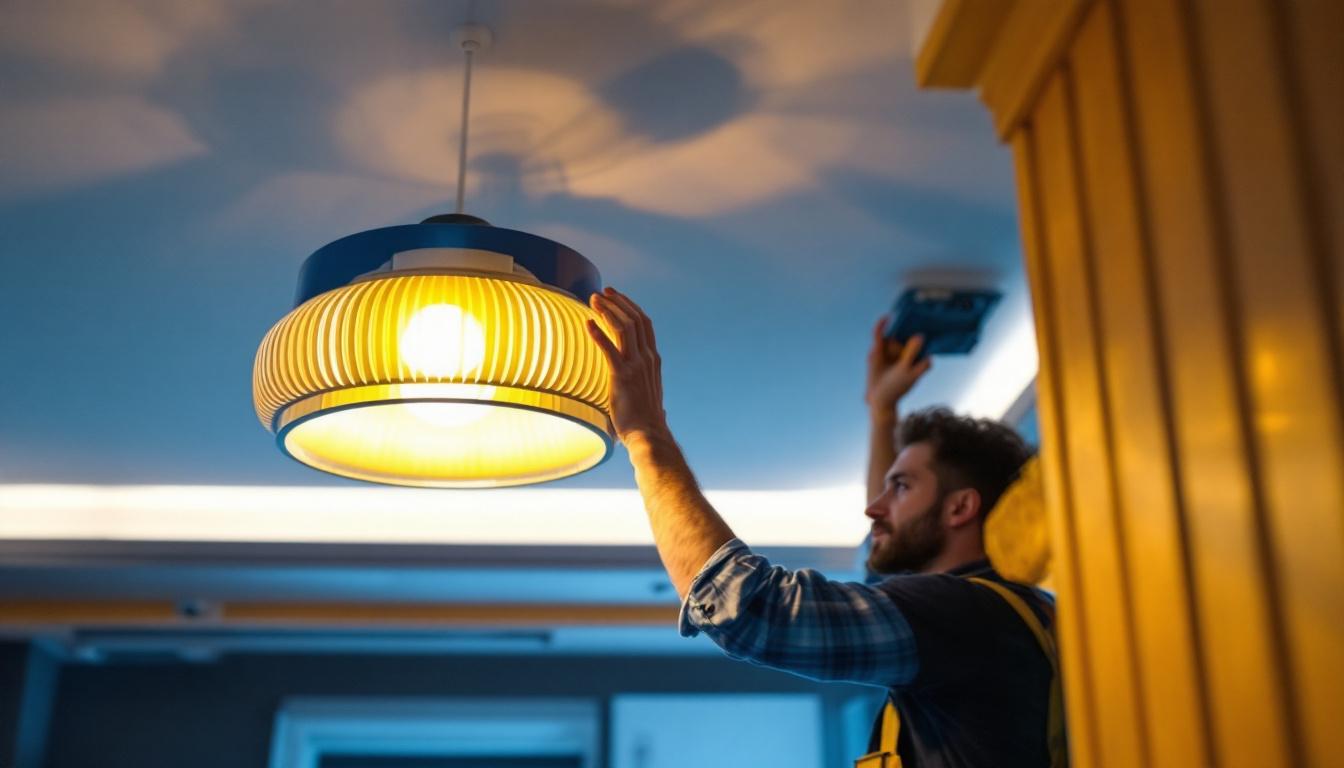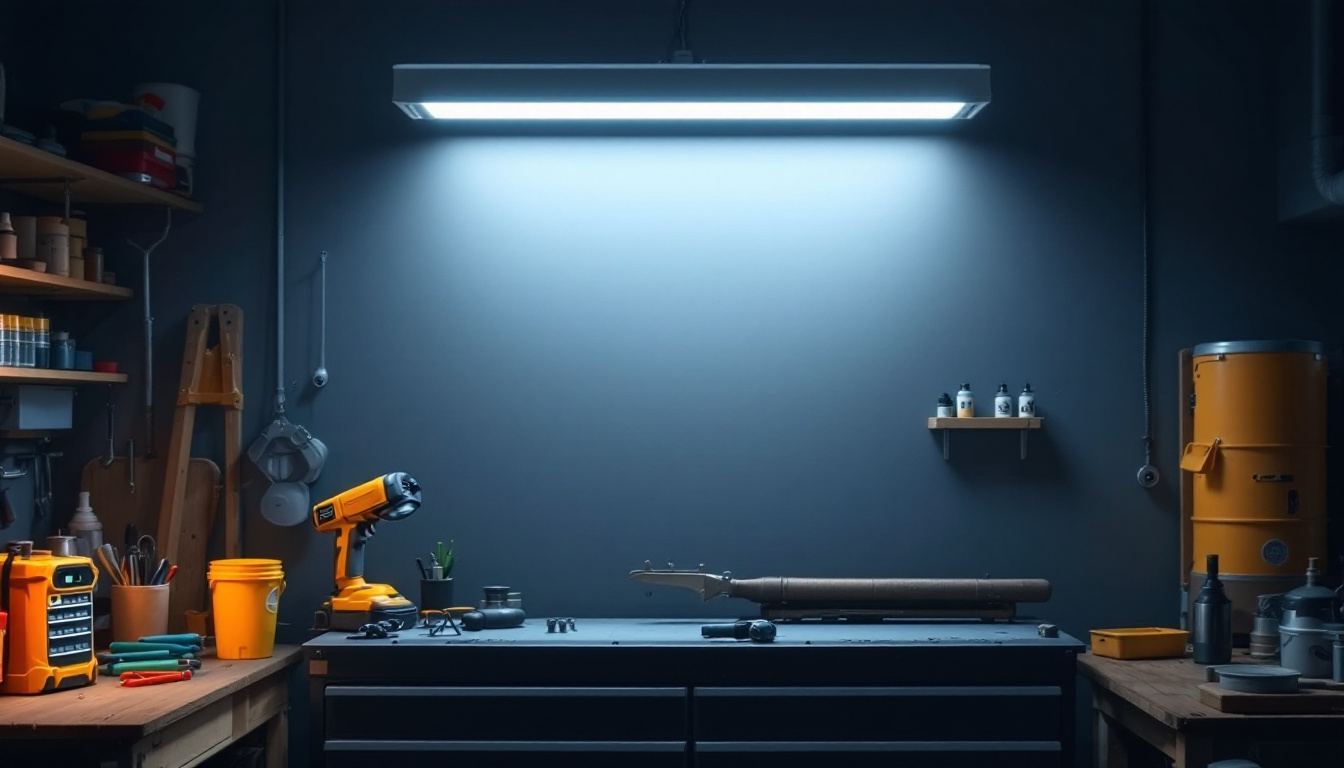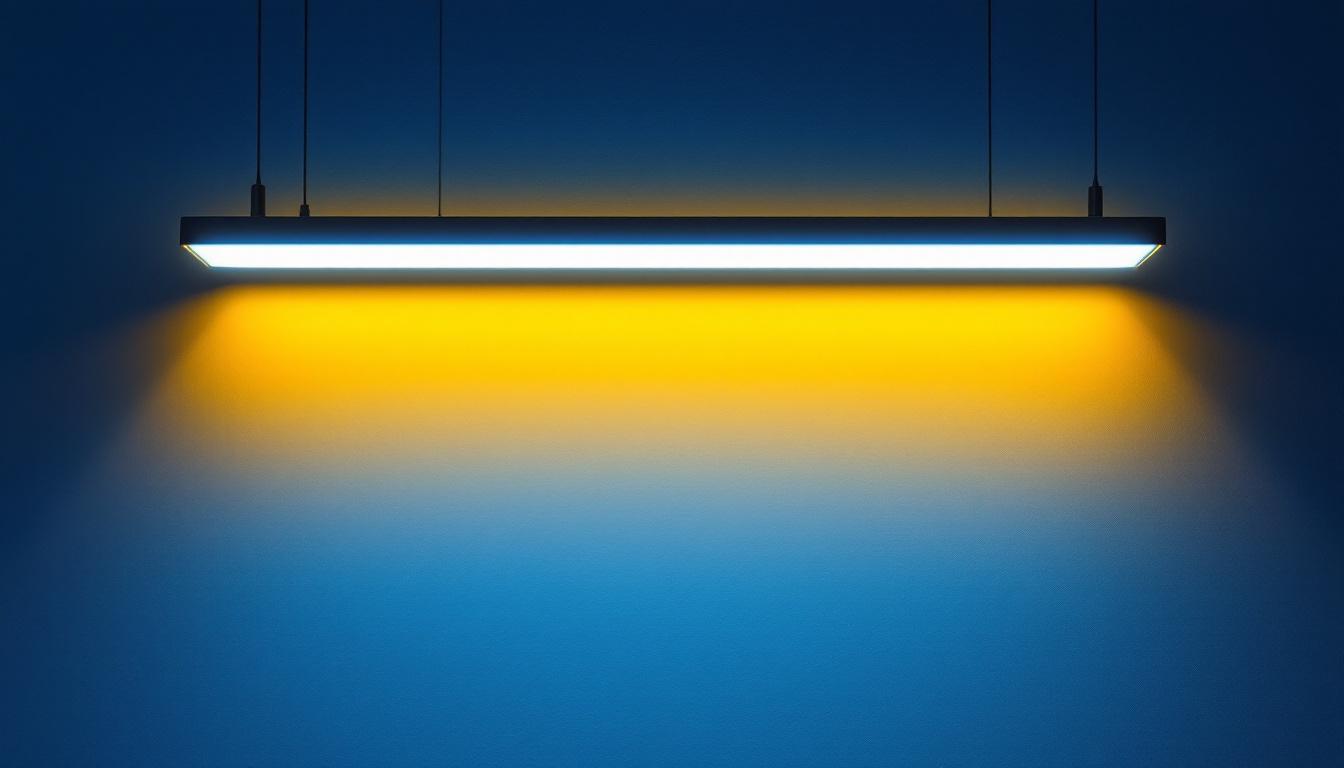
Picking the perfect ceiling lamp isn’t just about aesthetics; it’s about functionality, efficiency, and client satisfaction. Lighting contractors know that the right fixture can transform a room, but the wrong choice can lead to complaints, returns, or even safety issues.
Consider the room’s purpose first. For kitchens and workspaces, bright, focused lighting is essential. In contrast, living rooms and bedrooms benefit from softer, ambient light that creates a cozy atmosphere. Understanding the client’s lifestyle and preferences is key to making the right recommendation. For instance, a family that enjoys cooking together may prioritize bright task lighting over decorative fixtures in their kitchen, while a couple who loves to unwind with a good book might prefer dimmable options in their living room to create a relaxing environment.
Don’t overlook the size and height of the room. Large spaces often require multiple fixtures or lamps with higher lumen output, while smaller rooms can be overwhelmed by overly bright or bulky lamps. Ceiling height affects the type of fixture you can install; low ceilings call for flush mounts or semi-flush mounts, while high ceilings can accommodate chandeliers or pendant lights. Additionally, consider the layout of the furniture and the flow of the space; strategically placed lighting can enhance the overall design and functionality of the room, allowing for both beauty and practicality in the lighting scheme.
Modern, minimalist homes might call for sleek LED panels or recessed lighting, while traditional interiors often look best with classic chandeliers or decorative flush mounts. It’s important to balance style with the practical needs of the space. For example, a crystal chandelier might look stunning in a dining room but could be impractical in a high-traffic hallway. Furthermore, the choice of materials can greatly influence both the aesthetic and the durability of the fixture; metal finishes like brushed nickel or matte black can complement contemporary designs, while warm wood tones can add a touch of rustic charm.
Always keep the client’s budget in mind. High-end designer lamps are attractive but may not fit every project’s financial constraints. Offering a range of options ensures that you can cater to different price points without compromising on quality or style. Additionally, consider the long-term savings associated with energy-efficient lighting solutions. While the initial investment in LED or smart lighting may be higher, the reduction in energy costs and increased lifespan can provide significant savings over time, making them an appealing option for budget-conscious clients. By educating clients on these benefits, you can help them make informed decisions that align with both their aesthetic desires and financial realities.
Proper installation is crucial not only for safety but also for the longevity and performance of ceiling lamps. Lighting contractors must adhere to electrical codes and manufacturer guidelines to avoid costly mistakes. A well-installed ceiling lamp not only enhances the aesthetic appeal of a room but also ensures optimal illumination, making it an essential aspect of home design.
Start by turning off power at the circuit breaker before any work begins. Use a voltage tester to confirm that the power is off. This simple step prevents accidents and ensures a safe working environment. Additionally, it’s wise to inform household members of the ongoing work to avoid any accidental power restoration. Taking these precautions can save you from potential injuries and ensure a smooth installation process.
Secure mounting is essential. The fixture must be anchored to a ceiling joist or a suitable mounting bracket designed for the lamp’s weight. Using the wrong hardware can lead to sagging or falling fixtures, which pose safety hazards. It’s also beneficial to double-check the weight specifications of the lamp against the mounting hardware to ensure compatibility. If the ceiling is particularly high or the fixture is heavy, consider using additional support like a ceiling brace to distribute the weight evenly and enhance stability.
Use wire nuts that fit snugly and ensure all connections are tight. Loose wiring can cause flickering or even electrical fires. Label wires during disassembly to avoid confusion when reassembling. This practice not only aids in a smoother installation but also serves as a helpful reference for future maintenance or upgrades. Furthermore, using heat-shrink tubing on connections can provide an extra layer of protection against moisture and dust, which can compromise the integrity of the electrical connections over time.
For LED fixtures, check compatibility with dimmer switches if the client requests adjustable lighting. Not all LEDs work with every dimmer, so using compatible components avoids flickering and extends the life of the lamp. Additionally, consider the color temperature of the LED bulbs being used; warmer tones can create a cozy atmosphere, while cooler tones are better suited for task-oriented spaces. Discussing these options with clients can lead to a more tailored lighting solution that meets their specific needs and enhances their overall experience in the space.
Energy efficiency is a major selling point for clients looking to reduce utility bills and environmental impact. LED ceiling lamps have become the industry standard due to their longevity, low heat output, and minimal energy consumption. The shift towards LED technology not only benefits the environment by reducing carbon footprints but also aligns with the growing consumer demand for sustainable living solutions. As more individuals and businesses seek to adopt eco-friendly practices, the transition to energy-efficient lighting becomes an essential part of their overall strategy.
Contractors should educate clients on the benefits of LEDs over traditional incandescent or fluorescent bulbs. LEDs can last up to 25,000 hours or more, cutting down on replacement frequency and maintenance costs. Additionally, the color rendering index (CRI) of LED lights is often superior, providing a more accurate representation of colors in a space, which can enhance the aesthetic appeal of homes and businesses alike. This quality makes LEDs particularly attractive for retail environments, galleries, and residential spaces where ambiance is key.
Smart ceiling lamps offer convenience and customization. Features like remote control, color temperature adjustment, and scheduling appeal to tech-savvy clients. Installing smart fixtures requires some additional wiring knowledge and sometimes integration with home automation systems. The ability to control lighting through smartphones or voice-activated devices adds an extra layer of comfort and efficiency, allowing users to create the perfect atmosphere for any occasion, whether it’s a cozy movie night or an energizing morning routine.
When offering smart lighting solutions, ensure the client’s Wi-Fi network is reliable and that they understand how to operate the system. A well-informed client is more likely to appreciate and maintain their smart lighting setup. Moreover, educating clients on the potential for energy savings through smart technology can further enhance their investment. For instance, many smart systems allow users to monitor energy usage in real-time, enabling them to make informed decisions about their lighting habits. This not only contributes to lower utility bills but also fosters a greater awareness of energy consumption, encouraging more sustainable practices in their daily lives.
Lighting contractors often face unexpected challenges on the job. Ceiling height variations, uneven surfaces, and outdated wiring can complicate installations. Each project presents its own unique set of hurdles, requiring contractors to be adaptable and resourceful. For instance, when working in older buildings, contractors might discover that the original architectural features, such as crown molding or ceiling beams, can obstruct the intended placement of lighting fixtures. This necessitates creative solutions, such as repositioning fixtures or utilizing adjustable mounting systems to achieve the desired lighting effects while preserving the integrity of the space.
One frequent issue is dealing with old electrical boxes that aren’t rated for the weight of modern fixtures. In these cases, upgrading the box or installing a brace between joists is necessary for safety and compliance. Additionally, contractors must be vigilant about the condition of wiring and connections, as corrosion or wear can pose serious risks. Regular inspections and maintenance of existing electrical infrastructure can help mitigate these issues, ensuring that installations are not only aesthetically pleasing but also safe and reliable.
Older homes may have knob-and-tube wiring or non-standard voltages. Testing and sometimes rewiring are essential before installing new ceiling lamps. Always consult local electrical codes and, if necessary, coordinate with a licensed electrician. Understanding the specific requirements for different types of fixtures, such as LED versus incandescent, is critical, as these can vary significantly in terms of energy consumption and heat output. This knowledge allows contractors to make informed decisions that enhance both the functionality and efficiency of the lighting system.
Another challenge is ensuring the lamp’s size and style fit the existing space without overwhelming it. Using templates or mock-ups during the planning phase can save time and prevent costly adjustments later. Furthermore, considering the overall design theme of the room is crucial; a modern fixture might clash with a traditional decor style, while a vintage lamp could look out of place in a contemporary setting. By taking the time to visualize the final outcome, contractors can help clients select fixtures that not only illuminate but also enhance the aesthetic appeal of their spaces, creating a cohesive and inviting atmosphere.
Proper maintenance extends the life of ceiling lamps and keeps them looking their best. Advise clients on routine cleaning using soft cloths and non-abrasive cleaners to avoid damaging finishes or lenses.
Replacing bulbs promptly and using the correct wattage prevents overheating and fixture damage. For LED lamps, recommend professional checks every few years to ensure drivers and components are functioning properly.
Encourage clients to schedule seasonal inspections, especially in areas with extreme weather changes. Temperature fluctuations can affect wiring and fixture stability. Tightening screws and checking for corrosion during these inspections helps maintain safety.
When upgrading older lamps, suggest energy-efficient replacements or smart lighting options. This not only improves performance but also adds value to the client’s property.
Ready to elevate your lighting game? At LumenWholesale, we provide lighting contractors with an exceptional range of spec-grade ceiling lamps and fixtures at unbeatable wholesale prices. Say goodbye to middleman markups and hello to top-quality products that meet the highest industry standards. With our hassle-free bulk buying and free shipping, you can ensure every project shines with reliability and high performance. Don’t compromise on quality or value—choose LumenWholesale for the perfect blend of affordability and convenience. Explore our collection now and secure the best value in wholesale lighting.

Discover how occupancy switches are revolutionizing the lighting industry by enhancing energy efficiency and reducing costs for contractors.

Discover how 4-foot LED shop lights can revolutionize your workspace with energy efficiency and longevity.

Discover how fan and light control switches are revolutionizing the work of lighting contractors by enhancing energy efficiency and simplifying installations.

Discover how to optimize your suspended linear LED light fixture for maximum efficiency.